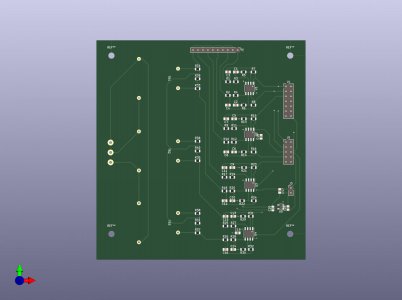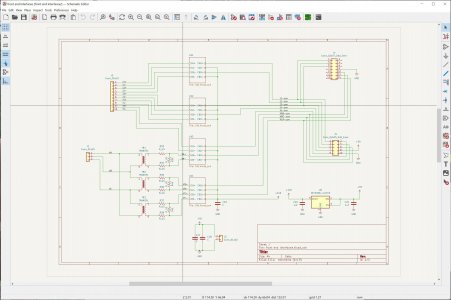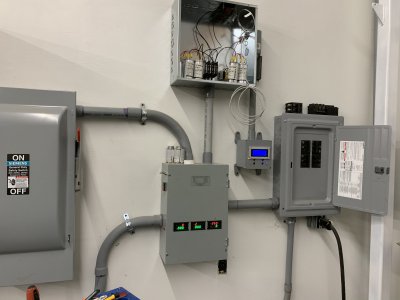So I have it installed and working fine measuring the voltage across all 3 phases. And then I went to set up the current measuring part.
One of those frustrating things - I had designed based on specs from one type of current sense transformer. Basically a wire-wound toroid to slip over the main leads. Now that particular sense transformer is not available. Finding one with a big enough opening to work with #2 copper wire is a challenge, more so than the 125A rating I want. The best match I could find with stock that didn't cost an arm an leg has an output of .000556 V per amp. I'm going to eventually end up with 5 of them so didn't want too pricey of an option. That's a fairly low voltage, for which I'll need some amplification. Nothing fancy, an op-amp, with a little attention to stability, should get me there. With active amplification, I can go for a 2nd order anti-aliasing filter rather than a first order passive. Realistically the higher frequency stuff is going to be so far down from the 60Hz signal it isn't critical, but why not? And of course with an op-amp front end, I can attentuate a signal if desired with a little change of resistors.
In the picture above I'd put the step-down transformers on a pcb perf-board. Since I need the op amps, I designed up a simple 2-layer board to house the transformers, op-amps for 5 current inputs, and connectors as a piggy-back for the main board. Threw this together pretty quickly, came out to just under $9 dollars total for 5 boards, plus another $20 for shipping.


More costly --- I've been watching for a Raspberry PI 4 to become available. There has been a steady stream of them coming out but I haven't caught them online with U.S. availability. I'm using one as my development environment, but I want to keep that as such. I need a simple linux box for logging data. I found an INTEL NUC, dual core celeron w/ memory and hard drive for about $200 on Amazon complete with 256GB SSD, 8GB memory, WIFI, etc. Given a PI is going to cost over $100 by the time some sort of power supply, case, and mass storage is added, I went ahead and ordered that. Will just need to blast the Win 10 install

Should be fine for running a logging app and I can eventually put a simple web server on it if I opt to go that route.





